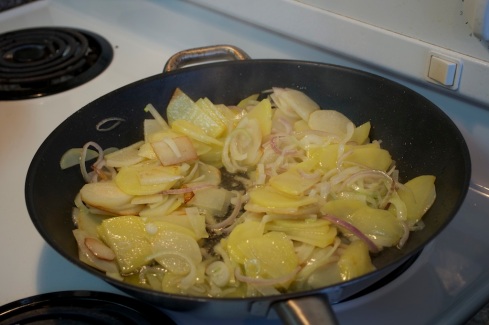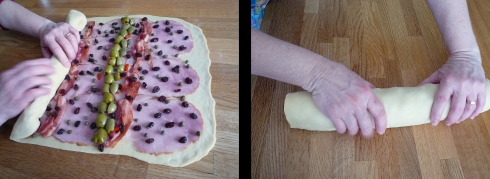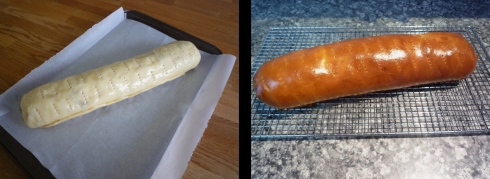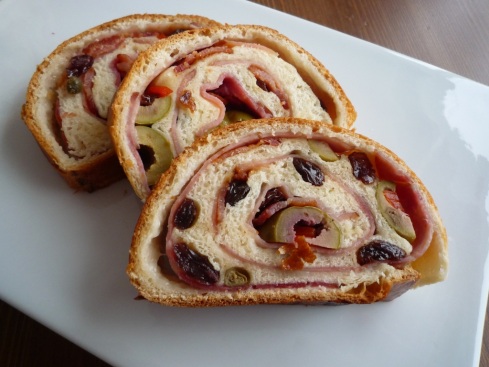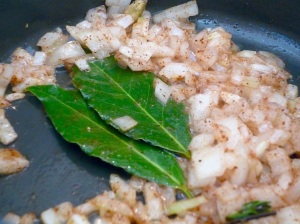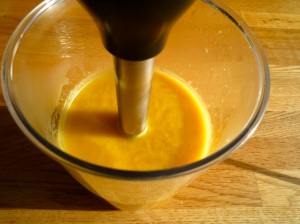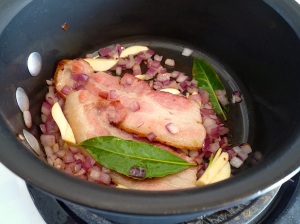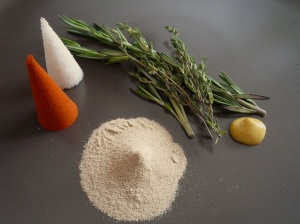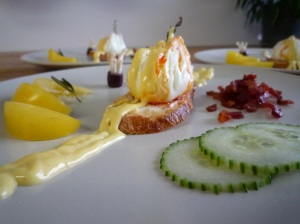My formal culinary training focused strictly on french cuisine. Even though this is the case I often find that the basic methods of French cuisine apply well to other world cuisines. Simple things such as the cuts, the base stocks, and just general methods have either been adapted from the French tradition or have analogous methods. What does change of course are the elements themselves. Here I prepared typical Venezuelan dishes relying on my classic french cuisine training. The result you ask? Delicious.
I prepared five common elements from the Venezuelan repertoire: arepas fritas, empanadas de carne Mechada, gusacaca, platanos dulces, and yuca frita. Arepas are the staple food in Venezuela. They consist of corn meal that is shaped into something resembling a hockey puck and generally cooked on a flat top and later filled with any number of meats or cheeses. Here I chose to shape them into little balls and deep fry them instead. Empanadas are similar to arepas in that they use the same corn meal dough, but are colored with anatto infused oil and are filled before cooking (like a turnover). For these empanadas I used carne mechada which is the Venezuelan version of a pulled beef dish common in Latin America (Cubans call theirs “ropa vieja”). guasaca is a simpler version of guacamole commonly flavored with small sweet peppers. Although plantains are cooked in a myriad of ways in Venezuela, platanos dulces is by far my favorite method. Essentially, the plantains are fried and then cooked in a spiced syrup. Finally, yuca or mandioca is another starchy root commonly used in Venezuelan cuisine. Here I choose to make fries that went great with the guasacaca.

- The key ingredients
After preparing the dough and filling them with meat I arranged them on a tray prior to frying them. I used a saran-wrap cutting board to press the little dough balls into discs that I then filled and closed.

- Preparing the empanadas
The syrup for the plantains consisted of brown sugar, cloves, cinnamon, and water. After it reduced a bit, I added the plantains and tossed them around until they were covered, and the syrup had reached the desired consistency.

- Preparing the plantains
As I mentioned before, arepas are generally formed into a disc shape and then cooked on a griddle called a “budare.” After they toast they are cut open and filled. However, here I decided to place a bit of half cooked bacon to give the interior dough some flavor.

- Placing the bacon in the arepa
Once I cooked all the elements I arranged them neatly for a photo shoot! here are the golden empanadas and syrupy plantains. They were delicious!

- Empanadas and Plantains
Here is the yuca fries, the guasacaca and arepas arranged in line. I dipped the fries in the guasacaca and ate the arepas with a little of butter. The half cooked bacon inside gave them a great flavor without making the interior too moist.

- Yuca, Guasacaca, and Arepas

- More detailed view
I will be posting all the recipes soon in case you want to give these a try! Although my arrangements and general presentation make these dishes look hard to make, the opposite tends to be the case. I always strive to take simple dishes and make them look perfect.
Here are the recipes. Yum!
Tags: arepas, avocado, bacon, carne mechada, empanadas, fried, guasacaca, plantains, venezuelan, yuca


